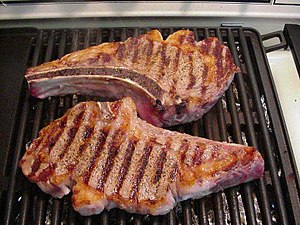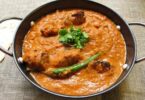If you can look beyond calories and fat to focus on nutrient rich foods like, eggs, coconuts, beef and other healthy higher fat foods you will find better health. Last week I posed the question, “Have we created our own health crises?”,http://valeriegoldstein.wordpress.com/2012/07/30/have-we-created-our-own-health-crises-high-fat-must-have-foods-for-good-health/.
This week will shed some light on the answer. You will get the “low-down” on the low-fat nutrient-less diet and the nutrients that are not provided when following it.
Five reasons to eat fat and get many more nutrients that will stave off health problems:
- Real food sources of saturated fat (meat, coconut) and cholesterol (eggs) have nutrients that are essential to good health. These are nutrients that are not found in low-fat foods include:
Arachidonic acid (AA) is a polyunsaturated fat but is mostly found in red meats, egg yolks, organ meats and breast milk. AA is a key factor for brain development, nerve function and keeping cells flexible. But many may be familiar with AA because of its involvement in muscle growth and repair. AA and docosahexaenoic acid (DHA, fish oil) are often talked about together because they make up a large component of the brain, http://www.cholesterol-and-health.com/Egg_Yolk.html.
Medium-chain triglycerides (MCT) also found in saturated fats: whole milk, butter, palm oil and coconut. MCT’s have metabolic benefits that aids weight loss, digestion, lower the risk of atherosclerosis and heart disease by increasing HDL cholesterol, supports thyroid function and boosts the immune system. Coconut also contains lauric and capryllic acid which helps fight bacteria and infections.
Choline is found in the membrane of the cell good sources ground beef, whole eggs (yes, especially the yolk) and peanut butter. Choline functions to protect the liver from fat accumulation (check out the recent spike in fatty liver disease, http://health.usnews.com/health-news/family-health/diabetes/articles/2009/04/10/nonalcoholic-fatty-liver-disease-5-tips-for-treatment-prevention) , helps prevent advanced age memory loss and may help lower cholesterol and homocysteine levels and may also assist in protecting against some types of cancers.
But you do not hear too much about these nutrients when the focus on cutting fat trumps all else.
Over the next few weeks, you will learn much more about the nutrient density and importance of health promoting fatty foods. Look for the next 4 points over the next few weeks.
There are many sources you can read to get a more detailed picture. Here are some:
http://thirdplanetfood.com/tidbits/?p=392
http://jn.nutrition.org/content/132/3/329.full
http://www.coconutresearchcenter.org/article10612.htm
http://www.naturalnews.com/027865_saturated_fat_health.html
http://www.westonaprice.org/vegetarianism-and-plant-foods/vegetarianism-and-nutrient-deficiencies
http://www.health-report.co.uk/saturated_fats_health_benefits.htm
http://www.diabetes-book.com/cms/articles/3-advice-a-commentary/7414-the-truth-about-saturated-fat2








Reblogged this on modernartandphotographyhenning and commented:
Great information by Valerie Berkowitz!
Best source of choline: beef liver. Eating 4 or 5 egg yolks a day would give you a full daily dose, too. 4 for women, 5 for men because men’s needs are higher.
Chris Masterjohn was talking about how a diet high in fructose in an animal with choline deficiency causes fat accumulation in the animal’s liver. What has the establishment been encouraging us to do? Consume more fructose, avoid liver and eggs.
You can supplement choline but the safety is questionable unless you’re careful which kind you get. The phospholipid-based choline is best and you’ll most likely find it in health food stores or on Amazon. If you have fatty liver, this is not a bad idea on a temporary basis. Trouble is most people who have fatty liver don’t know they have it, because it doesn’t usually start showing up on labs until pretty late in the disease process. MRI could diagnose it but that’s not exactly a standard of care right now. And I wonder if it should be. Fatty liver’s a huge risk factor for Type 2.
Speaking of diabetics, they used to use fructose as an alternative sweetener in “diabetic foods” found in the grocery store. With all the hooraw around Splenda, replacing fructose in those foods with sucralose was an important innovation. I can’t even imagine how much damage those foods did before someone finally wised up.
Postscript about eating liver as a treatment for fatty liver: Be careful. You could give yourself a serious copper/zinc imbalance. I looked up the nutritional content of liver a few years back and everything looked wonderful except the high copper content. Trying to keep that down to a dull roar (and you can balance it with muscle meat, which is higher in zinc, but that only goes so far) means you don’t get the full choline benefit. So if I were trying to treat fatty liver with food alone I’d go for egg yolks and pray I didn’t have an intolerance to them.
This is why it is important to choose foods carefully and eat a variety of these healthy foods. Too much of any one food repleces the nutrients of those you are not eating.